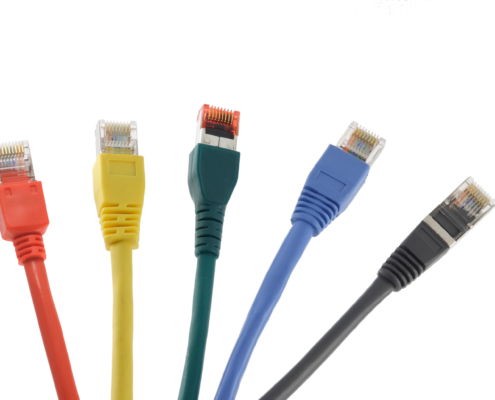What Is The Ethernet And How Does It Work?
We all use the internet and associated technology which is part of the Ethernet. But what is ethernet and how does it work? IT networks are crucial for productivity in the modern world. Connecting a variety of IT devices together allows you to combine technologies for the maximum gain e.g. connecting a PC to storage devices and printers to facilitate data transmission. Such networks, of course, have been in place for decades and one of the simplest and most common examples uses ethernet technology.

What is Ethernet?
Ethernet is a form of technology used in both local area networks (LAN) and wide area networks (WAN) to connect IT cabling Canary Wharf devices together. These networks rely on ethernet cables to connect devices and transmit data between them. An ethernet network will be localized geographically due to the involvement of ethernet cables, so they are commonly found in schools, colleges, and small businesses rather than connecting different organizations to one another.
How Does Ethernet Work?
Networks are powered by ethernet through several pieces of hardware. Firstly, ethernet cards are installed in PCs, and these are then connected to a network through the installation of an ethernet cable. These ethernet cables, which are available in a number of different categories, are used to transmit and carry data between the PC and the network. Completing an ethernet setup is the router; this device is used to manage and direct data across the network. The router ensures that the relevant PCs have access to not only the available data by data cabling Westminster, but also the internet.
Ethernet Cable Types
The most common types of ethernet cables you will find in LAN and WAN infrastructures are:
Cat 5: this type of ethernet cable uses four pairs of twisted copper wire to receive and transmit data. Typically, these are seen in older LAN setups and are capable of handling speeds of 100 Mbps at a 100 MHz bandwidth.
Cat 5e: as the name suggests, cat 5e ethernet cables are similar to Cat 5 but the ‘e’ stands for enhanced. As such, these cables can deliver speeds of 1000 Mbps over a distance of 100m on a bandwidth of 100 MHz
Cat 6: arriving a few years after the introduction of cat 5e cables, cat 6 cables improve on their predecessor in a number of ways. While cat 6 cables can handle speeds of 1000 Mbps over 100m, it is also capable of hitting speeds of 10 Gbps over smaller distances of around 50m. Cat 6 cables can also operate at a bandwidth of 250 Mhz.
Cat 7 and beyond: the range of Ethernet cables extends all the way up to Cat 8 –
Is Ethernet Better than Wi-Fi?
Whilst Wi-Fi is certainly more convenient due to its lack of cables, it’s not a guaranteed marker of superiority. Ethernet is much faster than Wi-Fi as it’s wired directly into the internet. There are no wireless signals to contend with in ethernet and the amount of interference is significantly reduced. This means that ethernet connections are more reliable and, accordingly, are perfect for telecommunications, streaming, and transferring files.
Ethernet Network Solutions
Ethernet connections may be a traditional form of networking, but this doesn’t mean their performance is stuck in the past. For smaller IT infrastructures, ethernet offers the perfect network solution in terms of speed and performance.
Original Source: What is the Ethernet and how does it work?


Comments
Post a Comment